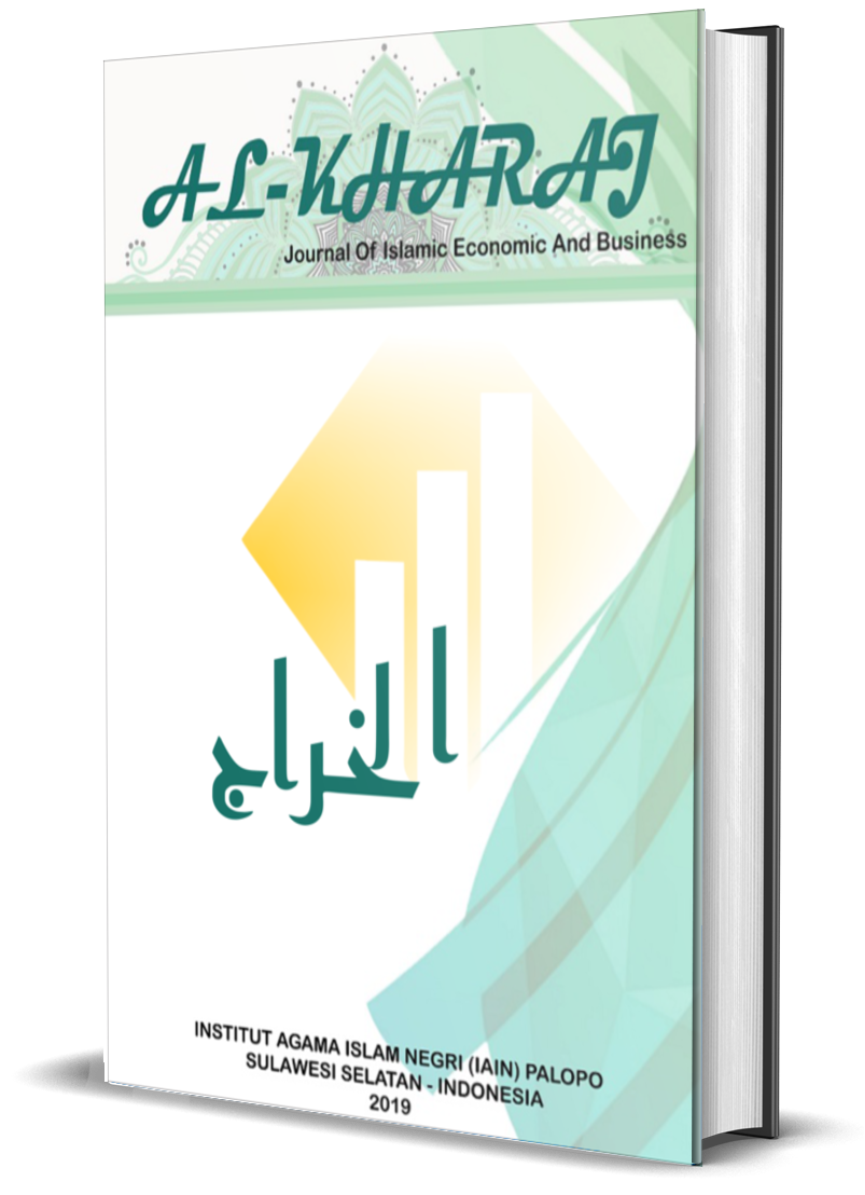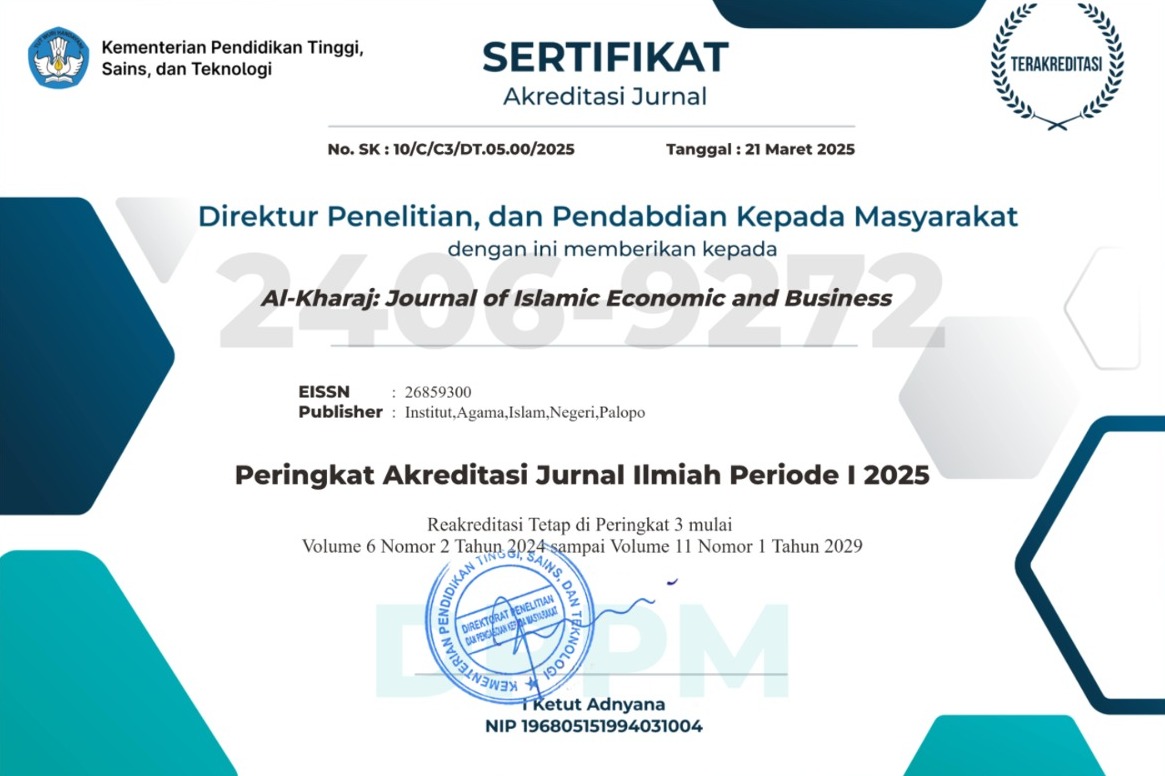The Impact of Inflation, Foreign Trade and Exchange Rates on Economic Growth in 5 ASEAN Countries
DOI:
https://doi.org/10.24256/kharaj.v7i3.7632Keywords:
Asean, export, imports, inflation, economic growthAbstract
This study aims to examine and analyze the partial and simultaneous influence of inflation , foreign trade , and exchange rates on economic growth in ASEAN countries . This study uses quantitative methods and descriptive data analysis. The sample in this study is five ASEAN countries . which was first formed . The results of this study indicate that inflation partially has a positive and significant effect on economic growth in ASEAN countries . With a probability value of 0.0247 <0.05, while the calculated T and T table values are 2.1161 > 2.01290 . The import probability value is 0.0478 <0.05, while the calculated T and T table values are 2.0112 > 2.01290. The import probability value is 0.3595 > 0.05, while the calculated T and T table values are 0.9741 <2.01290. The exchange rate probability value is 0.2086 > 0.05, while the calculated T and T table values are 1.0207 <2.01290. And the Prob F-Statistic value is 0.000015. Since the F-Statistic value is 0.000015 < 0.05, Ha is rejected and Ho is accepted. Therefore, it can be concluded that inflation, exports, imports, and exchange rates simultaneously have a positive and significant effect on economic growth in ASEAN countries.
References
Abdul , N. R., Shamshir, M., Hussain, A., & Sabir, S. (2019). Relationship Between Major Macroeconomic Variables and Economic Growth: A case of Pakistan during 1976-2016. WALIA journal.
Basuki, Tri Agus, Analisis Regresi dalam Penelitain Ekonomi & Bisnis, (Depok: RajaGrafindo, 2016).
D Lubis Adrian, 2012. Analisis Faktor yang Memengaruhi Kinerja Ekspor Indonesia, (Buletin Ilmiah Litbang Perdagangan, Vol.4 No. 1)
Direktorat Jenderal Strategi Ekonomi Dan Fiskal Tahun 2025 Recent Ecomomic Development. Monetary Authority Of Singapore tahun 2025.
Firdaus dan Ariyanti. Manajemen Perkreditan Bank Umum: Teori, Masalah, Kebijakan, dan Aplikasi Lengkap dengan Analisis Kredit. Bandung: Alfabeta. 2011.
Guritno Mangkoesoebroto, dan Algifari, Teori Ekonomi Makro edisi III, (Yogyakarta: STIE YKPN, 2012).
Iskandar, Putong, Economics, Pengantar Mikro dan Makro, Edisi Kelima, (Jakarta :Mitra Wacana Media, 2013).
Jusuf Soewandi, Pengantar Metode Penelitian (Jakarta: Elex Media Komputindo, 2012)
Kasidi, F., & Mwakanemela, K. (2013). Impact of Inflation on Economic Growth: A cash Study of Tanzania. Asian Journal of Empirical Research, hal.363-380.
Michael P Todaro, Pembangunan Ekonomi di Dunia Ketiga, (Jakarta: Eirlangga, 2014)
Purwanto. (2016). Analisis Faktor-Faktor yang Mempengaruhi Pertumbuhan Ekonomi. Jurnal Cendekia Niaga, 1(ISSN: 2548-3137).
Raab Hasanah Aries Oktaviana. Volatitas Nilai Tukar Dan Pertumbuhan Ekonomi : Studi Kasus Indonesia. (Skripsi : Universitas Airlangga). 2015.
Sadono Sukirono, Makroekonomi Teori Pengantar, (Depok: Raja Grafindo, 2016)
Sugiyono, Metode Penelitian Pendidikan (Pendekatan Kuantitatif, Kualitatif, dan R&D, (Bandung : Alfabeta, 2017)
Sugiyono, Statistika Untuk Penelitian (Bandung: Alfabeta, 2014)
Tan, K. Y. (2020). Singapore’s Economic Growth: Factors Behind the Success. Asian Economic Policy Review, 47–67.
Tarigan, P. (2011). Faktor Pendukung Keberhasilan Singapura Sebagai Salah Satu Pusat Perdagangan Dunia (Kajian Perspektif Multinational Corporation di Singapura). Jurnal Ekonomi Program Pascasarjana Universitas Borobudur, 2–3.
Umi Karomah Yaumidin. Financial Coorperation Of Oic Countries Prospect For Commom Currency Area. Jurnal Ekonomi Dan Pembangunan. Vol 22, No. 2. 2014.
Undang-undang perdagangan No.10 Tahun 1995
Wiqaya Azmi. Pengaruh Human Capital Investment, Investasi Asing Langsung, Nilai Tukar, Dan Sukuk Terhadap Pertumbuhan Ekonomi. (Skripsi Iain Salatiga, 2020).
Downloads
Published
How to Cite
Issue
Section
Citation Check
License
Copyright (c) 2025 Dina Atika, Fahriansah, Chahayu Astina

This work is licensed under a Creative Commons Attribution-ShareAlike 4.0 International License.
Authors retain copyright and grant the journal right of first publication with the work simultaneously licensed under a Creative Commons Attribution-ShareAlike 4.0 International License. In line with the license, authors are allowed to share and adapt the material. In addition, the material must be given appropriate credit, provided with a link to the license, and indicated if changes were made. If authors remix, transform or build upon the material, authors must distribute their contributions under the same license as the original.









